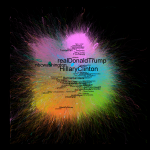Five Online Data and Open-Source Intelligence (OSINT) Trends to be Monitoring in 2017
Online data and open-source intelligence are increasingly becoming part of everyday discussion. Our industry continues to grow over time, bringing forth exciting ways in which data can benefit your organization. Here are five open-source intelligence (OSINT) trends to be monitoring in 2017 and moving forward.
1. Social media platforms will further restrict access to their data for law enforcement, security, insurance, and monitoring purposes
We have seen all social media platforms significantly pull back on information which could be used to monitoring individuals in 2016. The most notable example was Twitter, Facebook, and Instagram all pulling GeoFeedia’s access to their data following an American Civil Liberties Union (ACLU) report outlining law enforcement’s use of social media to monitor activists and protesters.
In May, Twitter revoked CIA access to DataMinr, citing surveillance concerns. “Data is largely public, and the U.S. government may review public accounts on its own, like any user could,” Twitter representatives said in a statement. Interestingly, on Nov. 8 the FBI awarded a sole-source contract to Dataminr for 200 seats on their “Advanced Alerting Tool.”
Facebook made its most significant API change back in April 2015, when it deprecated its version 1.0 API, which allowed access to friends’ status updates, check-ins, location, interests and more to third-party apps. Many law enforcement, security, and insurance entities used this functionality to set up fake profiles, befriend targeted individuals, and then scrape the target’s social media data for monitoring purposes. After the forced migration to Facebook’s Graph API v2.0, web monitoring software can typically access only public Facebook pages for web scraping purposes.
While some restrictions are due to pressure from civil liberty groups, others come from within the platforms themselves for self-preservation. If people stop using Twitter for fear of illegal monitoring, Twitter loses the impressions for their ads and markets will move. This can lead to significant loss of revenue.
After extensive user research, Facebook determined user satisfaction with data privacy was more important to the long-term health of the ecosystem than third-party app features enhanced by rich user data. Facebook’s Simon Cross told reporters that Mark Zuckerberg said one of Facebook’s new slogans is ‘People First’, because “if people don’t feel comfortable using Facebook and specifically logging in Facebook and using Facebook in apps, we don’t have a platform, we don’t have developers.”
I think we will see these restrictions continue to grow in 2017.
2. Users will begin to pull back from social media platforms, like Twitter and Instagram, which allow easy data mining
Although platforms try to limit or restrict unlawful monitoring, the pressure for data mining capabilities won’t completely eliminate access. We’ll start to see users pulling back from open social platforms (Twitter, Instagram & Facebook) in favor of closed platforms (Snapchat, LINE, Telegram, WhatsApp, LinkedIn, )
As advertisers try to trick more “organic” ads, users will pull back from these platforms in frustration over valuable content. We saw this phenomenon during the 2016 U.S. presidential election with fake news. Even though these platforms will continue to grow overall, user-generated raw content will be scaled back in frustration. This inevitably results in self-censored platforms.
3. OSINT data, not just social media, will be used to monitor security threats across the globe
By advancing analytics, we’ll see open-source content emerge as a primary asset in monitoring threats across all industries. While social media may have an ease-of-use advantage at the moment, we’ll see open-source content make significant gains.
Information is power; OSINT data will be used in everything from security threats to the theft of stolen credit cards. Monitoring everything from mainstream media to Deep Web sources, these sites will provide the new global pulse.
4. Dark Web will grow in both size and breadth of content
Recent studies have been downplaying the size and quantity of Dark Web content. However, one thing has not changed – an increasing breadth of information. As content becomes more contentious on the open web, some topics and some data will migrate into the Dark Web. This is especially true for those related to early sale or theft of information, such as credit card data.
Dark Web will become the early warning sign — the proverbial “canary in the coal mine” indicator — for fraud or security threats. Although, given the complexity to access Dark Web content (you need a special browser and proxy setup), the data will quickly disseminate to the Open Web through websites. These sites operate with anonymity footprints, such as Pastebin.com and other paste sites.
5. Many more industries will look to leverage OSINT in creative ways
Industry vectors such as national security have been using open-source data for years; we are seeing an uptick of OSINT usage in other industries struggling to stay competitive. Some of our existing customers — who wish to remain anonymous — are leveraging open-source data as a competitive edge over their industry’s razor-thin margins. Looking to the future, all industries will need to leverage OSINT if they want to stay competitive.
Opening Up to Open-Source Data
How can a non-security industry leverage open-source data? That is where BrightPlanet fits in. We are experts at determining creative ways for your business to use OSINT for sales, marketing, recruiting, intelligence, and monitoring. Our Deep Review is how most clients get started with open-source data.




